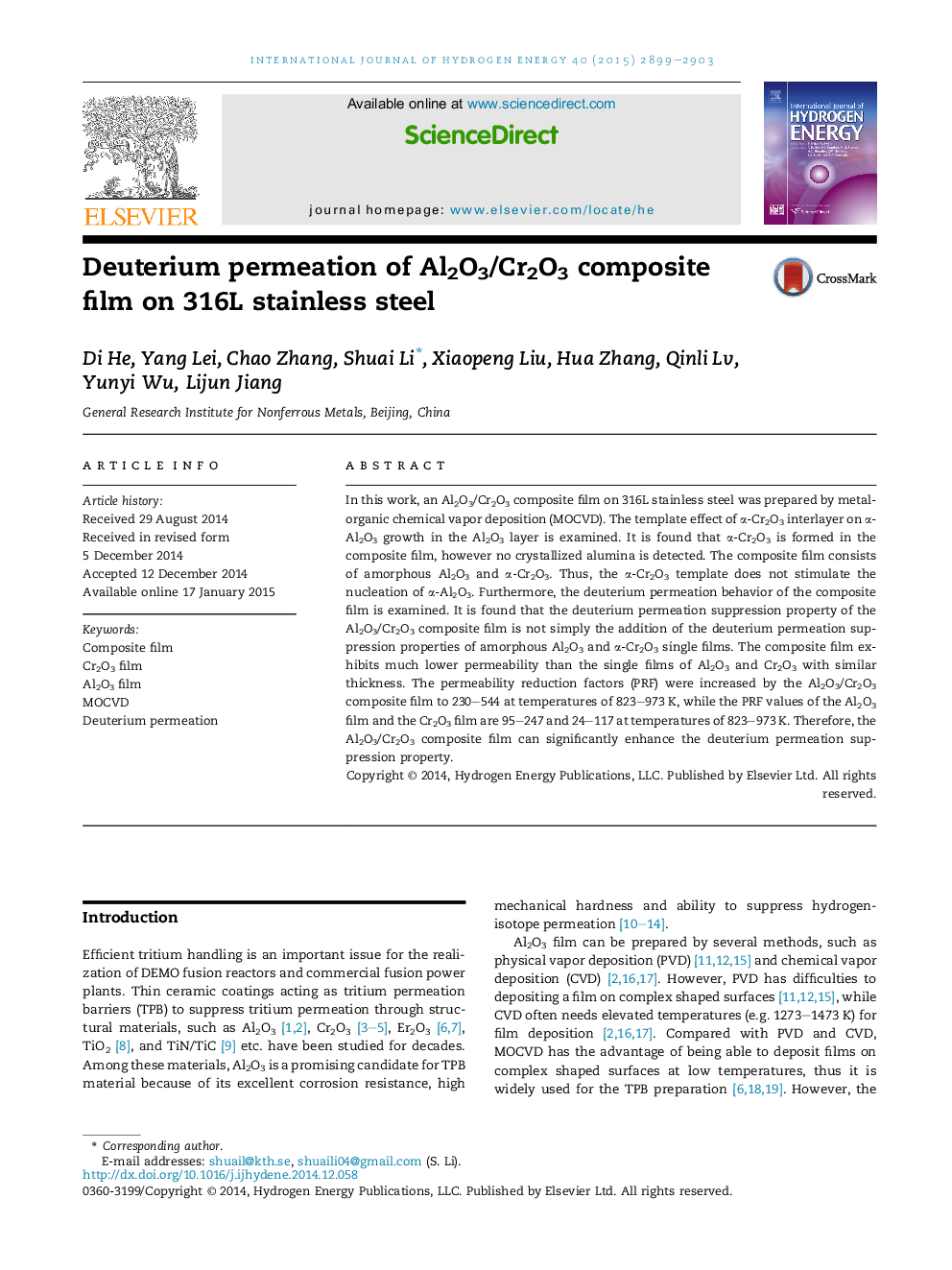| Article ID | Journal | Published Year | Pages | File Type |
|---|---|---|---|---|
| 1270054 | International Journal of Hydrogen Energy | 2015 | 5 Pages |
•The composite film prepared by MOCVD consists of amorphous Al2O3 and α-Cr2O3.•The α-Cr2O3 template does not stimulate the nucleation of α-Al2O3.•Permeation resistance of the composite film is not simply addition of single films.•The PRF value of the Al2O3/Cr2O3 film are 230–544 at temperatures of 823–973 K.
In this work, an Al2O3/Cr2O3 composite film on 316L stainless steel was prepared by metal-organic chemical vapor deposition (MOCVD). The template effect of α-Cr2O3 interlayer on α-Al2O3 growth in the Al2O3 layer is examined. It is found that α-Cr2O3 is formed in the composite film, however no crystallized alumina is detected. The composite film consists of amorphous Al2O3 and α-Cr2O3. Thus, the α-Cr2O3 template does not stimulate the nucleation of α-Al2O3. Furthermore, the deuterium permeation behavior of the composite film is examined. It is found that the deuterium permeation suppression property of the Al2O3/Cr2O3 composite film is not simply the addition of the deuterium permeation suppression properties of amorphous Al2O3 and α-Cr2O3 single films. The composite film exhibits much lower permeability than the single films of Al2O3 and Cr2O3 with similar thickness. The permeability reduction factors (PRF) were increased by the Al2O3/Cr2O3 composite film to 230–544 at temperatures of 823–973 K, while the PRF values of the Al2O3 film and the Cr2O3 film are 95–247 and 24–117 at temperatures of 823–973 K. Therefore, the Al2O3/Cr2O3 composite film can significantly enhance the deuterium permeation suppression property.
